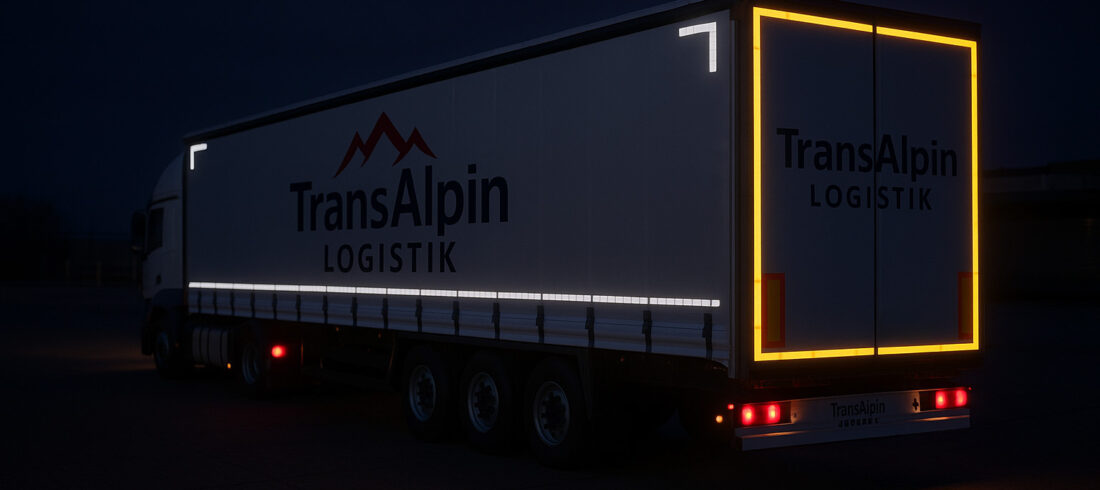
Contour markings according to ECE 104 are more than just reflective stripes on trucks – they are a legal requirement and a key contribution to road safety. For transport companies, it is essential to understand the regulations and apply them correctly. In this article, you’ll learn why contour markings are mandatory, how to apply them properly, and which types exist.
The main purpose of contour markings is to make heavy commercial vehicles more visible at night or in poor weather conditions. Feedback from real-world use and accident statistics confirm: vehicles with contour markings are seen from a greater distance – significantly reducing the risk of rear-end collisions and side impacts.
Since 2011 (for trucks) and 2013 (for trailers), contour markings according to ECE 104 have been mandatory for:
This EU-wide regulation applies to all newly registered vehicles in the affected categories.
The markings must make the outer contours of the vehicle visible – on both the sides and the rear. The following requirements apply:
Side: White or yellow
Rear: Red or yellow
Stripe width: 50 mm
Mounting height: Between 250 mm and 1500 mm above ground (up to 2100 mm in technical exceptions)
At least 80% of the side length must be marked.
The rear contour should be represented as completely as possible.
Only Class C reflective tapes with ECE approval may be used. These offer high reflectivity, even in rain or dirt, and are usually marked with an “E” symbol every 50 cm.
There are also special segmented contour markings for curtain-sided bodies, which flex with the tarp and have proven effective in practice.
Depending on the vehicle type and design, different types of contour marking application are defined under ECE 104. Which variant must or may be used depends on legal requirements and the technical feasibility on the vehicle:
The complete outline of the vehicle is traced with reflective strips – on both the sides and the rear.
Full contour marking is only mandatory at the rear if the vehicle is wider than 2.1 m.
It is not mandatory on the sides, but it is permitted and recommended if the vehicle’s design allows it. It provides the best visibility at night.
This variant consists of a continuous strip along the lower side edge and additional markings at the upper corners (each at least 250 mm long, arranged at a right angle).
For vehicles longer than 6 m, partial contour marking on the sides is mandatory if full contour marking is not used.
In this case, only the horizontal contour is marked using a strip along the lower side and rear edges – without corners or upper outlines.
This variant is only permitted if a full or partial contour marking is not technically feasible, such as on tankers or timber transporters.
Use our contact form or give us a call – we look forward to it!